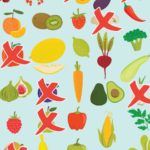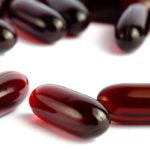Protein Powder Recipe Ideas: Fueling Your Fitness Journey
Protein powder is a versatile ingredient that transcends simple shakes. Its ability to boost protein intake makes it a crucial component for muscle growth, repair, and overall health, particularly for those engaging in regular physical activity. But beyond the basic shake, a world of delicious and creative recipes awaits. This guide explores diverse protein powder recipe ideas to elevate your nutrition game.
Breakfast Powerhouses:
-
Protein Pancakes: Start your day with a protein-packed twist on a classic. Combine protein powder (whey or casein work well), oats, eggs, milk (dairy or plant-based), and a touch of baking powder. Experiment with flavors using banana, blueberries, or cinnamon. For extra indulgence, add a dollop of Greek yogurt or a drizzle of honey. Consider adding chia seeds or flaxseed for added omega-3s and fiber. The key to fluffy pancakes is gentle mixing and proper cooking on a lightly oiled griddle.
-
Protein Oatmeal: Elevate your morning oatmeal by stirring in a scoop of protein powder. The powder will add a creamy texture and a protein boost. Top with your favorite fruits, nuts, and seeds for a complete and satisfying breakfast. Consider using flavored protein powder to enhance the overall flavor profile. For a warm and comforting breakfast, use rolled oats and cook according to package directions. For a quicker option, opt for quick-cooking oats or overnight oats.
-
Protein Smoothie Bowls: Create a visually appealing and nutritious breakfast by blending frozen fruit (berries, bananas, mangoes), spinach or kale, protein powder, and a liquid base (milk, yogurt, or juice). Pour the mixture into a bowl and top with granola, nuts, seeds, fresh fruit, and a drizzle of nut butter or honey. Experiment with different flavor combinations to create your signature smoothie bowl. Using frozen fruit creates a thicker, ice-cream-like consistency.
Snack Smart:
-
Protein Balls: These no-bake energy bites are perfect for a quick and satisfying snack. Combine protein powder, oats, nut butter, honey or maple syrup, and your choice of add-ins (chocolate chips, dried fruit, nuts, seeds). Roll the mixture into small balls and refrigerate for at least 30 minutes to firm up. These are highly customizable; adjust sweetness and ingredients to your preference.
-
Protein Mug Cake: Craving a sweet treat? A protein mug cake is a quick and easy solution. Mix protein powder, flour (whole wheat or oat flour), milk, an egg, and a sweetener in a mug. Microwave for 1-2 minutes, or until cooked through. Add chocolate chips, nuts, or fruit for extra flavor and texture. Adjust cooking time based on your microwave’s power.
-
Protein Yogurt Parfait: Layer Greek yogurt, granola, and protein powder in a glass or bowl for a refreshing and protein-rich snack. Add berries, sliced bananas, or a drizzle of honey for extra flavor. The creamy yogurt combined with the crunchy granola and protein powder creates a delightful textural experience.
Meal Enhancements:
-
Protein-Packed Muffins: Incorporate protein powder into your favorite muffin recipe. It adds moisture and a protein boost without significantly altering the texture. Experiment with different flavors like blueberry, banana nut, or chocolate chip. Use whole wheat flour for added fiber.
-
Protein Pancakes: While mentioned under breakfast, these can easily be adapted for a post-workout meal or a light dinner.
-
Protein-Boosting Soups & Stews: Add a scoop of unflavored protein powder to thicken soups and stews while boosting their protein content. This works particularly well with creamy soups or those with a thicker base. The protein powder will blend seamlessly and add a subtle creaminess.
Creative Culinary Adventures:
-
Protein Brownies: Indulge your sweet tooth with protein-packed brownies. Many recipes are available online, using protein powder as a partial flour replacement. These can be fudgy or cakey depending on the recipe and ingredients.
-
Protein Cookies: Similar to brownies, protein powder can be incorporated into cookie recipes, offering a healthier alternative to traditional cookies. Experiment with different flavors and add-ins. Oatmeal cookies or peanut butter cookies work particularly well with protein powder.
-
Protein Bars (Homemade): For complete control over ingredients and nutrition, make your own protein bars. Recipes typically involve a combination of protein powder, nuts, seeds, dried fruit, and a binding agent like honey or nut butter. These bars are ideal for meal replacement or a convenient snack.
Considerations for Choosing Protein Powder:
The type of protein powder you choose can impact the taste and texture of your recipes. Whey protein is fast-digesting and often has a milky flavor, while casein protein is slow-digesting and has a slightly less pronounced flavor. Soy protein, brown rice protein, and pea protein are plant-based options, offering a different taste and texture. Choose a protein powder that complements the flavors of your chosen recipe. Unflavored protein powder is the most versatile option for incorporating into a wide range of recipes.
Tips for Success:
- Start with small amounts: Gradually increase the amount of protein powder in your recipes until you reach your desired level of protein and taste.
- Blend thoroughly: For smoothies and drinks, make sure to blend thoroughly to avoid clumps of protein powder.
- Adjust sweetness: If using unflavored protein powder, adjust sweetness according to your preference.
- Experiment with flavors: Don’t be afraid to experiment with different flavors and ingredients to create your own unique recipes.
- Consider dietary restrictions: Choose a protein powder that aligns with your dietary needs and preferences (e.g., dairy-free, gluten-free, soy-free).
By embracing these protein powder recipe ideas, you can transform your meals and snacks, enriching your diet with valuable protein and creating delicious, nutritious options that support your fitness goals and overall well-being. Remember to consult with a healthcare professional or registered dietitian before making significant changes to your diet, especially if you have any underlying health conditions.





